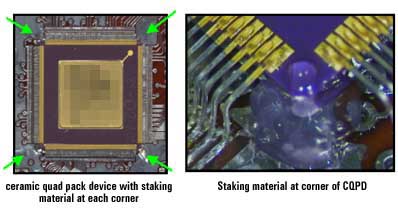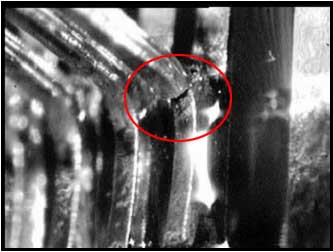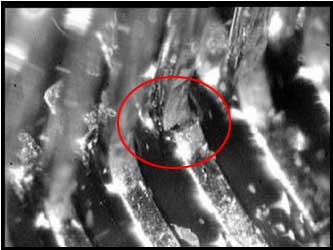|
|
|
|
Staking Errors |
|
9. PWAs: Insufficient / wrong type staking material
These are images of broken leads on a ceramic quad pack device. The leads broke during vibration testing just above the solder fillet. Scanning electron microscope analysis indicated that these were fatigue fractures - the cause being due to insufficient mechanical support. This part did have staking material at each corner, but there was too little of it, and it was too resilient for a package as heavy as this one. This points to the importance that designs address where to put staking material (i.e., at the corners? underfill?); the proper choice of polymer (i.e., is a silicone, urethane, or epoxy the best choice for the application?); and matching coefficients of thermal expansion between the part, the printed wiring board substrate, and the staking material.
Reference :
NASA-STD-8739.1
paragraph 4.4-3b:
The staking material selected shall provide adequate mechanical support to allow the item to survive vibration levels imposed during end-item use. Rigid staking material with a low thermal expansion coefficient is generally desirable. For special cases where parts sensitive to thermal/mechanical stress are used, application of resilient materials may be required.
|
|
|










